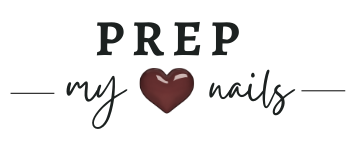
If you’ve recently joined the Polygel nail craze, you’re probably having some unanticipated challenges during application and wondering why your Polygel nails are sticky. Well, practice makes perfect, and this is especially true in the domain of beauty. If you’re having difficulties with your Polygel nails, it’s likely because you’ve made some of the same mistakes that others have. There are several reasons that your Polygels might be sticky after curing, as well as several potential treatments.
Polygel Sticky After Curing: Is Polygel Supposed To Be Sticky After Curing?
If your Polygel nails are still sticky after curing for the specified amount of time, you likely need to remove the top layer. While that may seem excessive in light of the time and effort you just put into those lovely nails, there’s a purpose behind it. Any Polygel nail that comes into contact with oxygen gets sticky. Each layer of Polygel will have a semi-sticky topcoat, even if you stack it. It is why using a top coat polish to finish your appearance is so important.
On the other hand, most topcoat polishes must be wiped off with a 91 percent acetone solution to remove the final sticky coating. You should see the stickiness dissipate once you’ve wiped down the top layer. There are no-wipe top coats available on the market, but customer opinions are divided, with many advising people to avoid them if their nail set is ivory, baby blue, or any other light hue, since no wipe topcoats have a propensity to become yellow.
Polygel Soft After Curing
In addition to the Polygel, most products include a specific liquid that must be used to keep the brush from sticking too much. If you drink too much liquid, the product may liquefy and perhaps a flood if the nail seems to be moist; pause until the liquid has evaporated before curing. In addition, certain hues are pretty vibrant. There is too much pigment in white and dazzling white. As a result, never use them too thickly. LED light cannot get through the coating, and the product remains soft in the center when the coating is exceptionally thick. Such a nail is prone to breaking. Split the technique into 2-3 parts if you want long fingernails with a white free edge.
How Thick Should Polygel Nails Be?
To sustain the weight and length of the artificial nail, short Polygel fingernails should be as thin as a credit card, while long Polygel fingernails should be somewhat thicker. Make the apex thicker and the free edges narrower if you want longer nails. Your free edges must never be longer than 0.3 inches, regardless of the length of your nail.
White Polygel Not Curing
The white pigment in the Polygel prevents the colored Polygel from curing as effectively as a clear Polygel; most white Polygels must be thin to cure. The white pigment prevents UV radiation from penetrating too deeply into the Polygel, which causes this effect. Consider this: white does, after all, reflect light. If the pigment in the Polygel reflects light, the UV light will not penetrate deeply enough into the Polygel to cure it until the white Polygel is applied thinly and cured under UV light.
Can You Over Cure Polygel?
To clear this up briefly, the answer is yes. However, the Polygel, as well as the curing light both, have a role. The most prevalent problems with over-cured nails are staining and fading of the glossy sheen. Furthermore, because the LED light heats the gel onto the nail’s surface, making it overly hard, there is sometimes a durability loss. When gel becomes overly sturdy, it is more prone to cracking and breaking. Finally, you won’t be able to remove Polygel nails using acetone solution if you over-cure them. Because the acetone solution won’t penetrate, you’ll have to file the color off, which is a considerably more time-consuming process.
How Long Does Polygel Take To Cure?
Polygel nails, unlike ordinary nail polish, cannot be cured using the air-dry method. Using an LED light to cure Polygel is the most effective method. LED lighting is a superior alternative to UV lighting since it is both safer and more cost-effective. A photoinitiator is a chemical found in Polygel. This chemical is essentially the component necessary for Polygel to solidify under an LED light. To harden Polygel, these particles must be exposed to an LED light directly to create larger chains, resulting in a hard surface. In an LED lamp, the cure time is roughly 30 seconds, whereas, in a UV lamp, the cure period is two minutes.
Conclusion
If you’re having trouble applying Polygel nails, remember that you’re not alone. Many individuals stumble the first few times. Whenever in uncertainty, try, try again; you’ll ultimately get the knack for it. Polygel nail lacquer is a relatively new form of nail treatment that might take several iterations to master. It isn’t to say that you can’t make a lovely, long-lasting set of fingernails at home to increase your self-esteem; it simply means you’ll have to do the study to figure out what’s holding you back.








